“A B C”
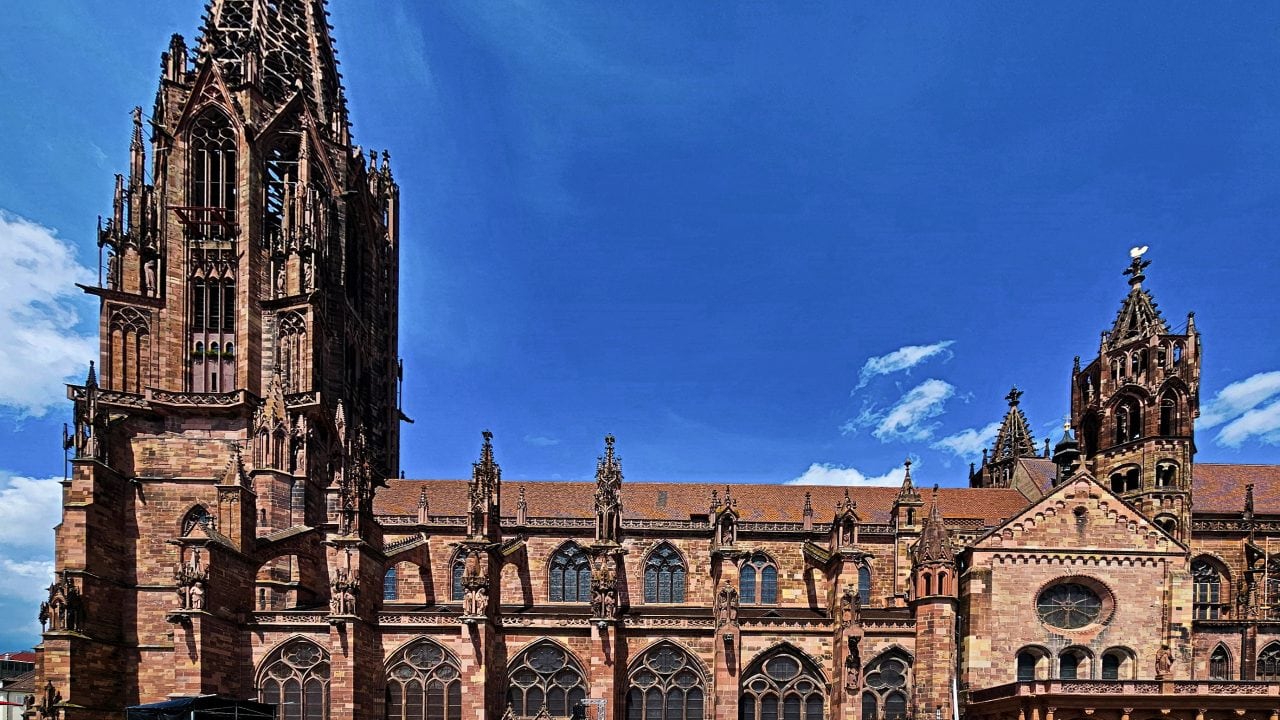
“Another Bloody Church” or “Another Bloody Cathedral”: I laughed when my sister, on a cruise ship, told me this acronym that she had heard from a cranky passenger about to disembark. I reiterated it to another friend who was recently on a riverboat tour down the Rhine River knowing that she would get a laugh and agree whole heartedly. I must say that when I looked through our latest photos, 9 out of 20 were church-related! Mike and I love looking at churches, even if we only spend a few minutes in each one. The architecture, the statues, the intricate details and the overall grandeur of these buildings is just amazing. Take the Freiburg Münster shown here – a medieval masterpiece started in 1200 AD!
During our recent church visits, we finally found a pulpit in what I consider its rightful place—front and center, raised above the altar. It had always puzzled me how anyone behind or to the side of a priest could possibly see him during a sermon. This church got it right!
One rainy day Mike and I drove to a French Beaux Village or beautiful town and were quite disappointed so we just picked the town of Haguenau on the map and drove there. We had a super time. Naturally we had to explore their huge, beautiful looking church while we were there. A free concert was just about to start in the church. We stayed for a few acts, including a five-piece ensemble and a choir with a blind gentleman reading Braille music. I have never seen that before and I think it must be quite difficult. Sadly, we missed the Polish dancing group I was eager to see. Mike’s tolerance for church music has its limits.
Freiburg is a lovely looking town with a medieval, historic centre. The city was heavily bombed during World War II. In 1940, aircraft of the Luftwaffe mistakenly dropped 60 bombs near the railway station, killing 57 people. At the time this was wrongly reported by the official German news agency as an attack by the Western Allies. In 1944, an actual raid by the British with more than 300 bombers destroyed a large portion of the city centre, with the notable exception of the cathedral. After the war, the city was rebuilt on its medieval plan. This reconstruction is a boon for tourism today, but I can’t say that I appreciated the McDonalds’ advertising on the reconstructed town entrance. At least they left off the Golden Arches.
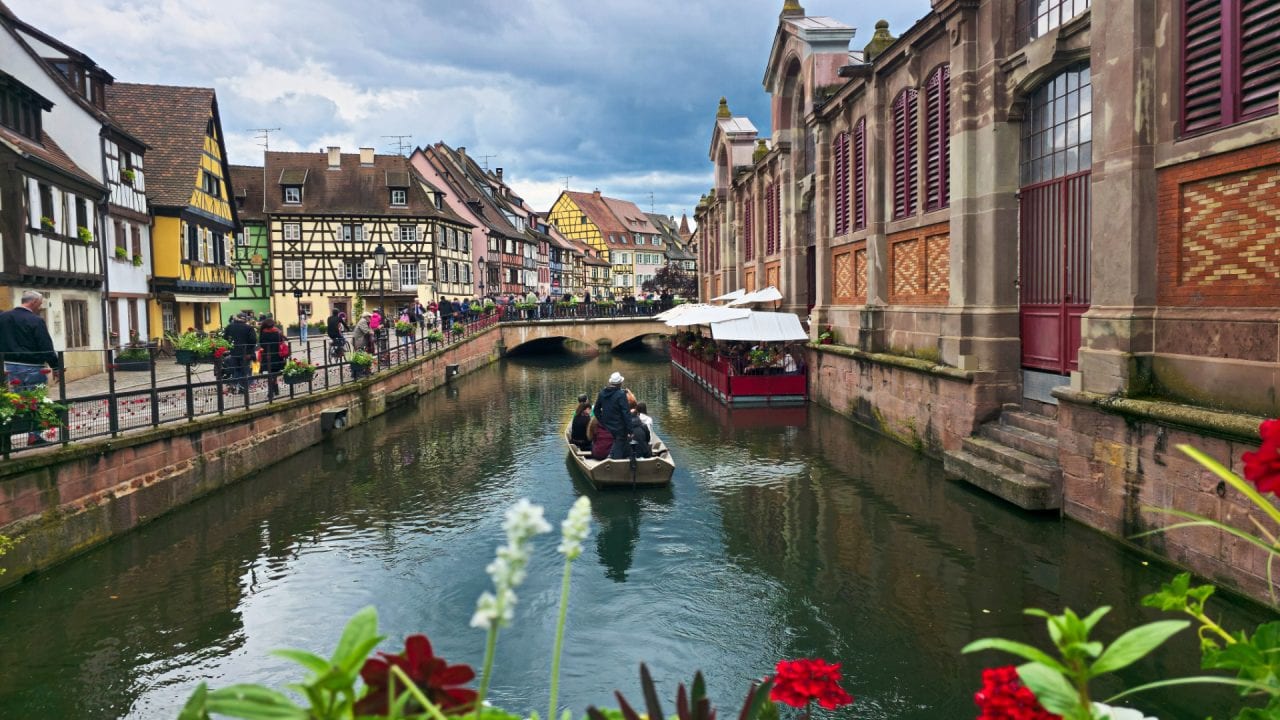
Another nice town that we visited near our campground was Colmar. Whereas Freiburg was in Germany, Colmar is in France. I tried to say thank-you to one waitress but I garbled out something like “Grazie… Danke Schoen….” and finally “Merci”. At least she laughed.
According to Wikipedia, Colmar is renowned for its well-preserved old town. I always wonder how much of these towns really are “well-preserved” and how many are actually just rebuilt really well after the war. Quite honestly, as a tourist and not a historian, it doesn’t matter. The towns and villages are lovely to visit.
One historic home in Colmar, La Maison des Têtes (The House of Heads), supposedly boasts 106 carved heads on its exterior. We didn’t bother counting! A peculiar sign in town instructed “pedestrians let the cars pass”. European roundabouts are often beautifully decorated. But imagine our surprise when we encountered the Statue of Liberty in the centre of a Colmar roundabout. It turns out, France has multiple replicas.
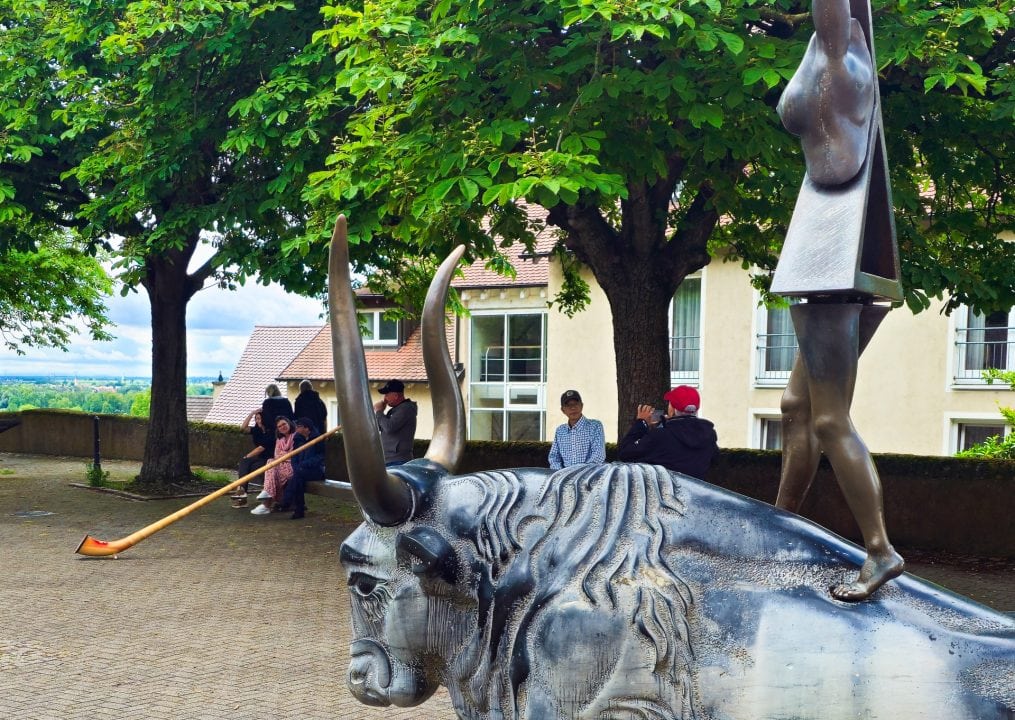
Breisach, was the German town next to our French campground. During World War II, 85% of it was destroyed, but it has since been rebuilt.
I love seeing the statues across Europe. Some are of famous figures, others of everyday people or objects, but there are some that are just downright weird, like the one pictured here. What I really wanted to highlight in the photo is the alphorn in the background. Mike and I were amazed by its beautiful sound, quite different from what we’d heard before. The small picture here is the town of Mulhouse that we also explored. Almost every day, we discover new and interesting towns as we leisurely drive or cycle through the area.
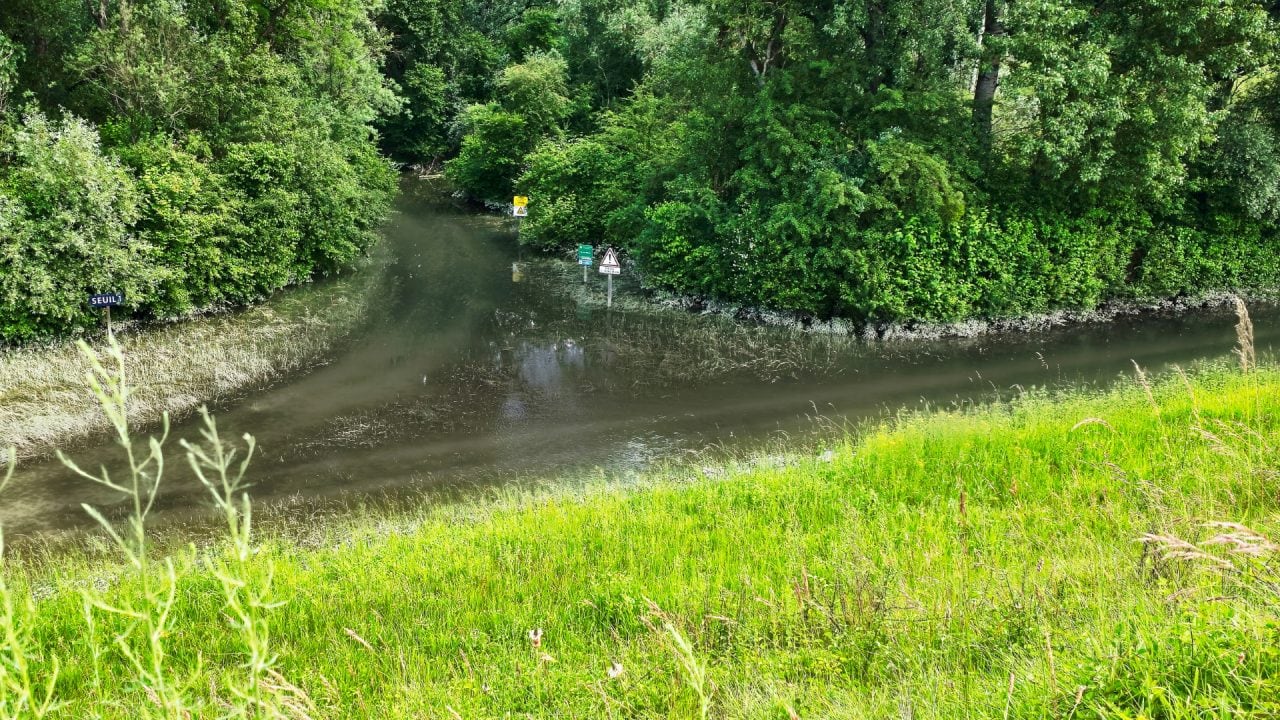
This year, persistent rain has led to flooding concerns across Southern Germany. There have been multiple deaths east of us. The photo shows us biking above submerged roads, with street signs still visible. Even the ferry to Germany, near our current campground, is out of service due to high water levels. We are often encountering closed roads or detours while cycling near the Rhine.
Since my last post, we’ve met several British and Irish campers for the first time this year. One Northern Irish couple had received a recent celiac diagnosis making them very worried about finding gluten-free food on their travels. The problem is that since Brexit, many foods cannot be brought from the UK into the EU. If inspected, you would need to leave the food at the border. Thanks to the Northern Ireland Protocol, which ensures no hard border between Northern Ireland and the Republic of Ireland, this couple drove from the North, through the Republic of Ireland which is an EU member, and brought their gluten-free foods with them when they crossed on the ferry.
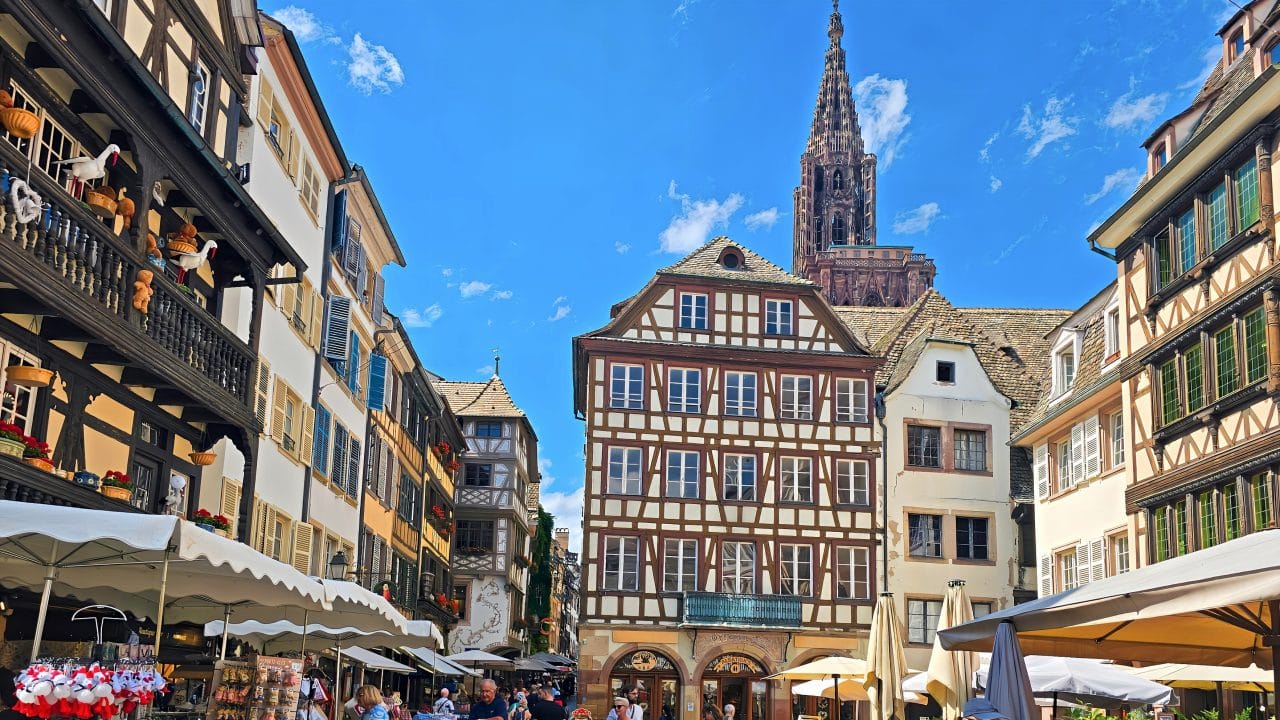
We have now reached Strasbourg, France on our cycling journey. One day we took the train into Strasbourg, did a walking tour and then cycled back to our car that was waiting about 40 km south. On a second visit we tried cycling to a much longer running-based audio tour, before continuing on our route. We followed the running tour path on our bikes hoping that there weren’t any major staircases enroute.
Strasbourg’s Notre-Dame Cathedral is considered second only to Paris’s Notre-Dame Cathedral in France. It was very hard, in a compact town, to get a photograph of the large cathedral. The stained glass inside reminded me of how these windows served as visual storytelling before the printing press.
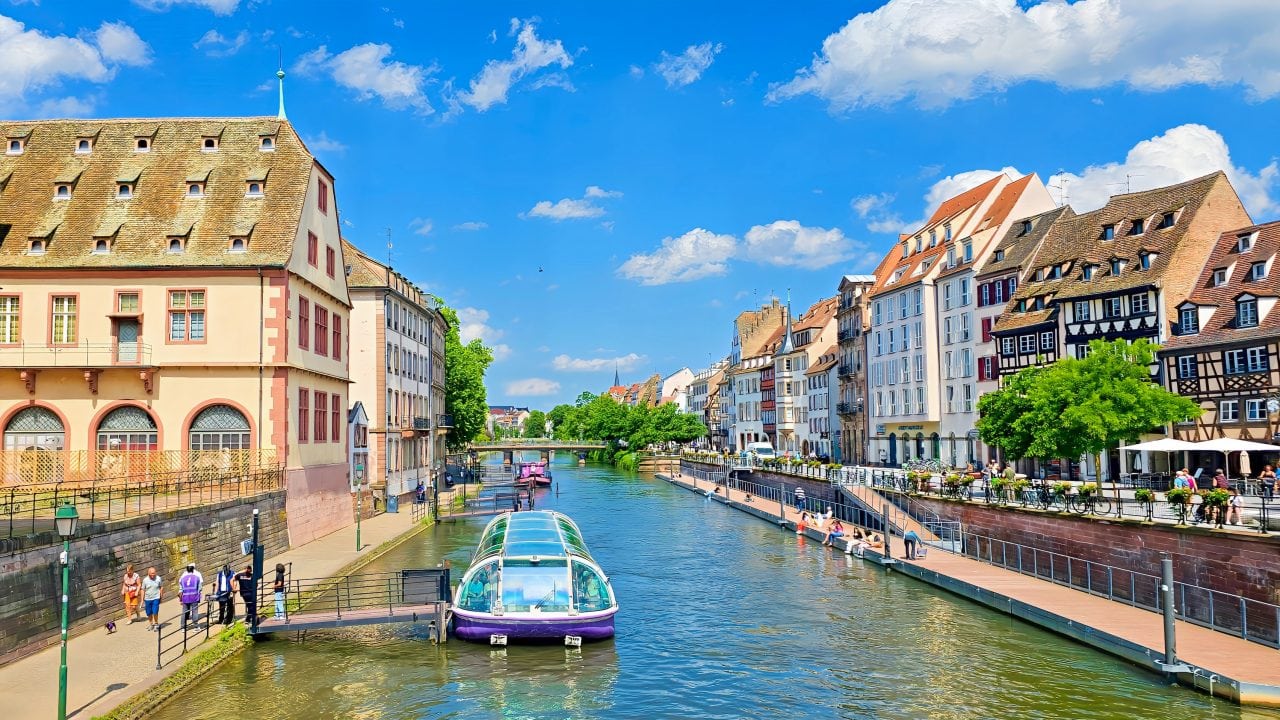
Cycling around Strasbourg’s old city, an island surrounded by canals, we were surprised to find large EU buildings. It turns out Strasbourg is the seat of the EU Parliament, while Brussels holds the executive branch.
Built in 1382, the Saint-Pierre-le-Vieux church has a unique history. After 200 years of Catholicism it became a Lutheran church. 150 years later, Louis XIV ordered restitution of the church choir to the Catholics. The Lutherans now only had access to the nave, and not the choir (altar) section. When there was a Catholic Mass, the parishioners entered from a door on one street. For a Lutheran service, the people would enter from a different door on a different street.
Mike and I have completed two sections of the Rhine – the Alpine Rhine with its snow-covered mountains and the High Rhine with the Rhine Falls and Stein am Rhein. We are now exploring the Upper Rhine and will be for quite a few weeks. Next up: the famous Middle Rhine with its castles and the Rhine Gorge, followed by the Lower Rhine, where the river meets the North Sea. Stay tuned for more fun and adventures!
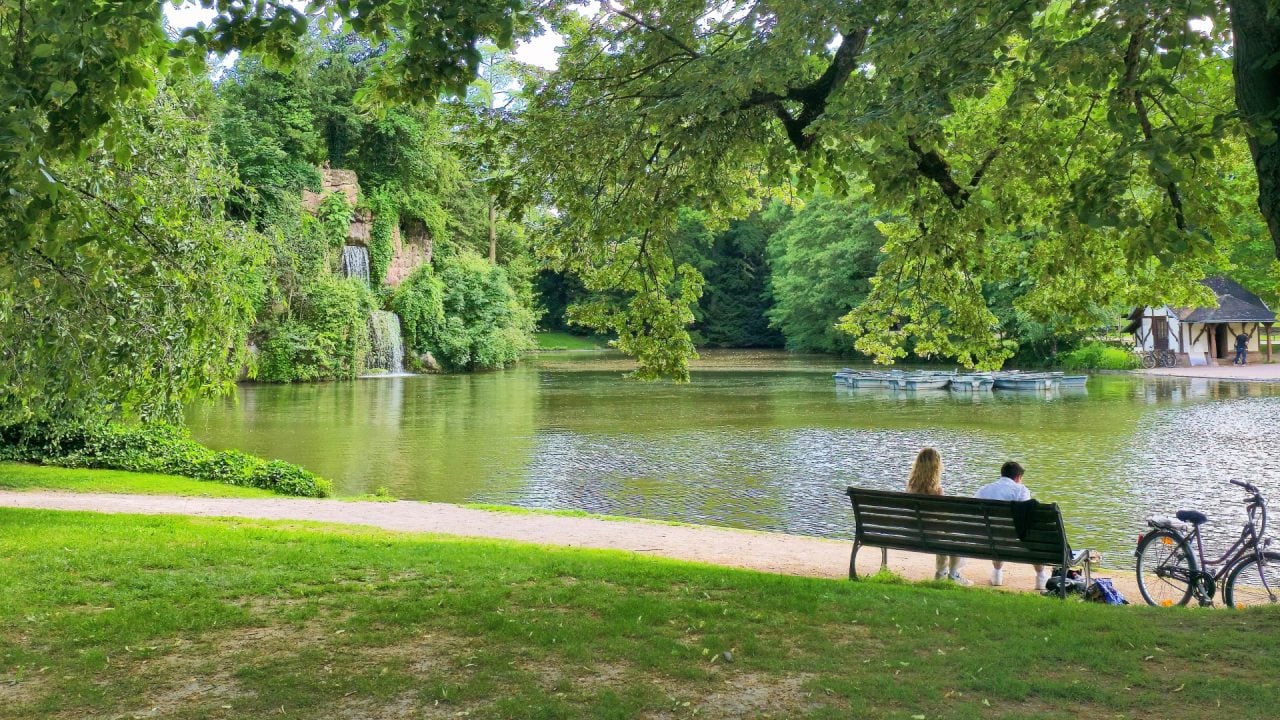

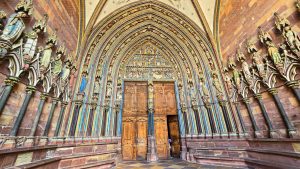
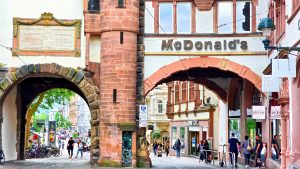
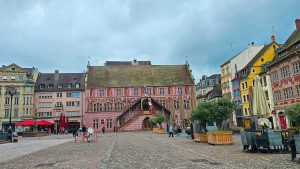
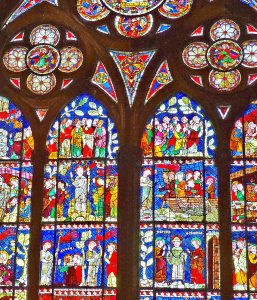
Leave a Reply